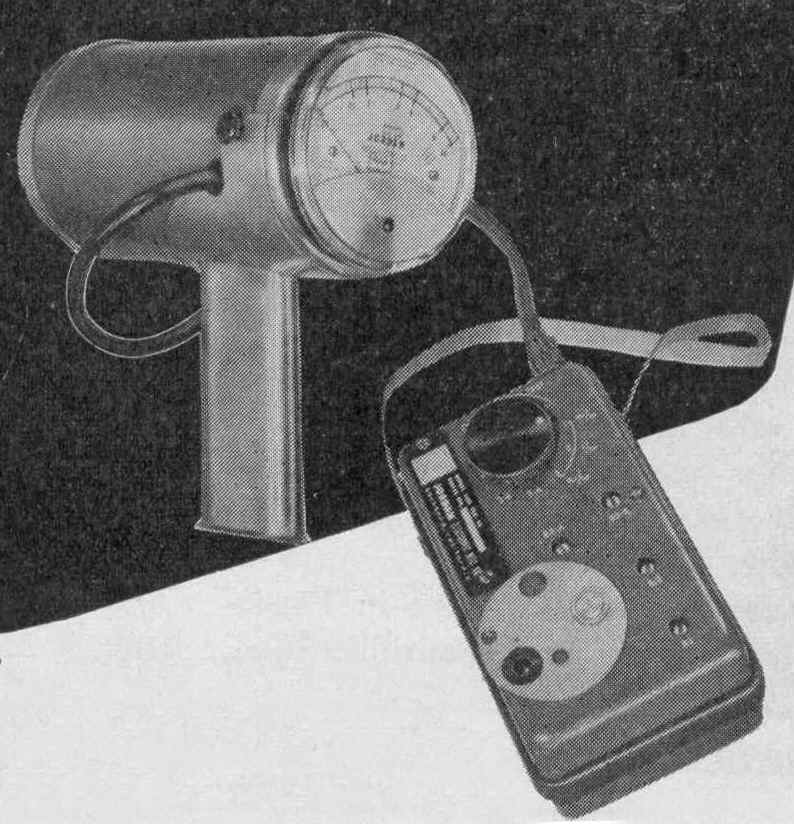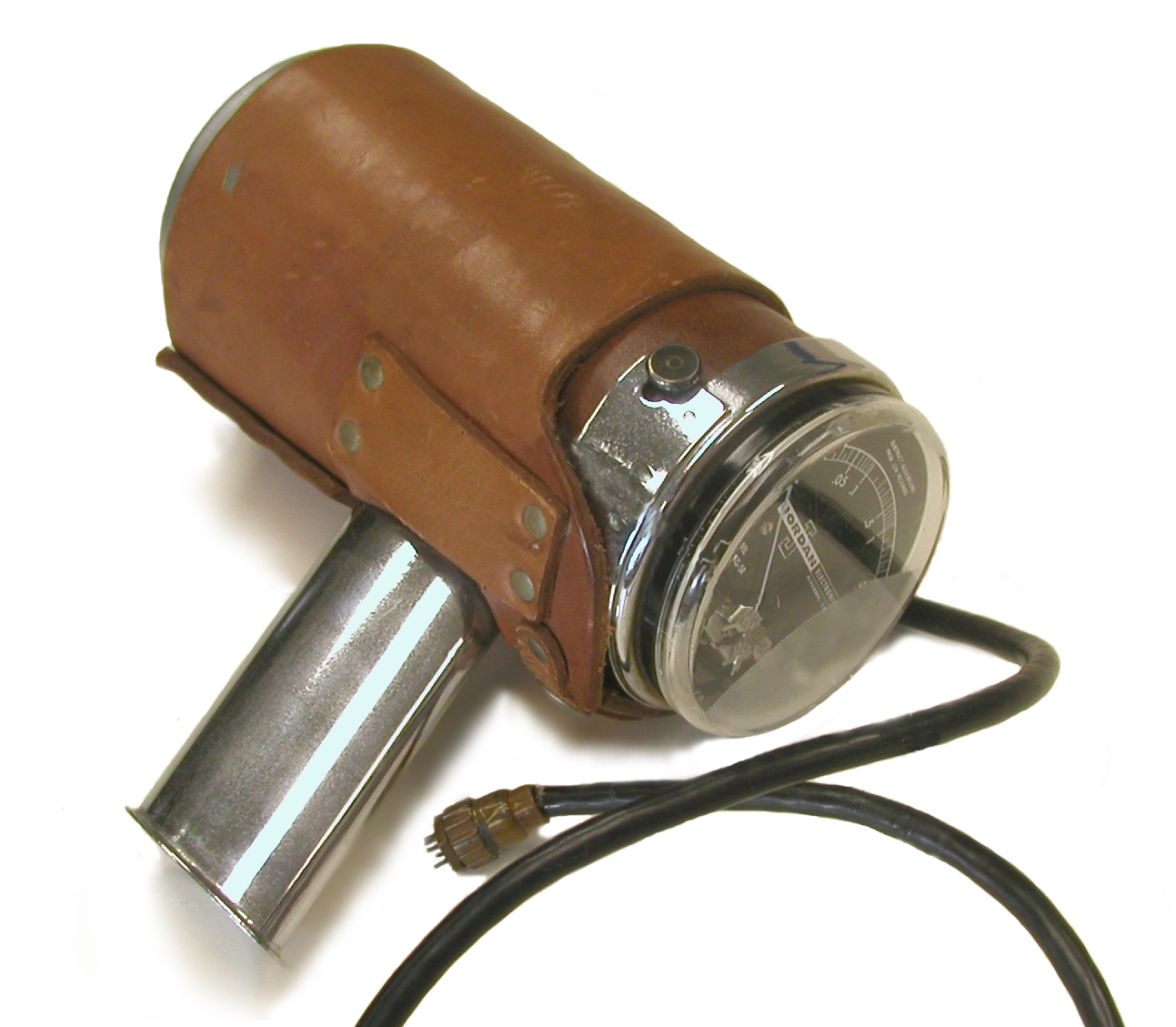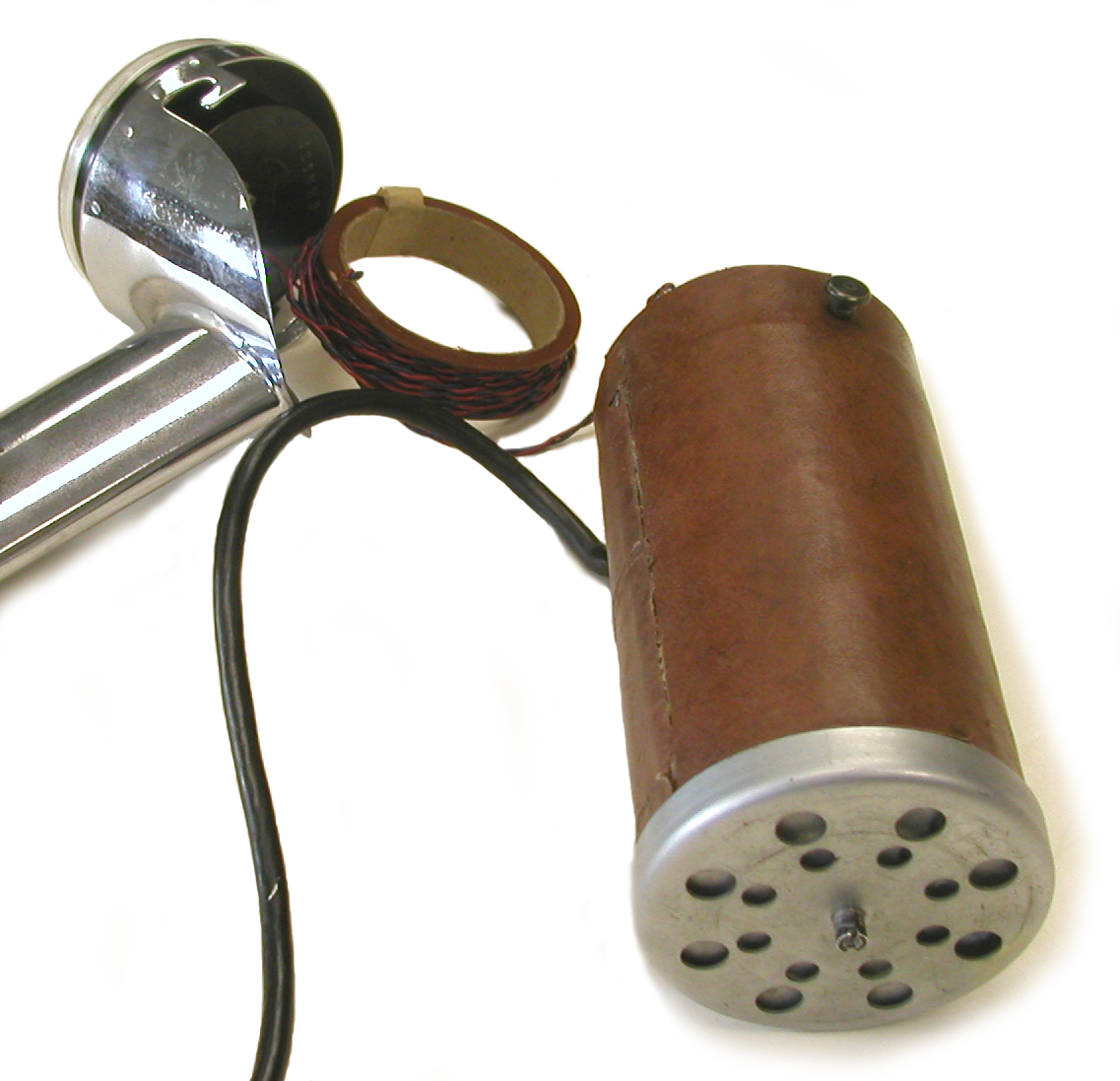Jordan Model AGB-10K-SR (?) (ca. 1954-1956)
This nifty wide range ionization survey meter was manufactured by Jordan Electronic Mfg. Co. Inc. of Pasadena California. It had a chrome pistol grip, a short cylindrical body with a circular logarithmic scale on one end, and something missing from the example shown here, a separate control unit (see below left).


That it is tightly clad in metal-studded leather would make it particularly appealing to a certain segment of the health physics community.
It came in three versions, the Models AGB-1-SR, AGB-10-SR, and the AGB-10K-SR. The SR at the end of the model number referred to the Sr-90 check source that would be located in the control unit. The GB at the beginning of the number referred to the fact that they were sensitive to gamma and beta radiation. The only functional difference between the three models was their range and that, I believe, was a function of the Control Unit. If true, what is shown here could have been the AGB-1-SR, the AGB-10-SR, or the AGB-10K-SR. I have designated it the AGB-10K-SR simply for convenience.

This design was the predecessor to the more user friendly, "Radgun." The latter, a true classic, also came in three versions: the AGB-1G-SR, the AGB-10G-SR, and the AGB-10KG-SR. The most obvious advantage of the Radgun over this older design was the fact that it did not have the cumbersome Control Unit.
One thing that is mildly curious about the instrument shown here is the AGB-10KG-SR designation on its meter face. At least as I understand it, the model number should not include the middle G—the latter was a feature of the Radgun model numbers.
The references I have found to this instrument all date from 1954 and 1955. Since the earliest advertisements for its successor, the Radgun, date from 1957, I would estimate that the possible dates of production for this unit range from 1954 to 1956.
Perhaps the most unique thing about this instrument is its use of the Neher-White ionization chamber. This chamber had several interesting features: the chamber current drove the meter directly in a logarithmic mode without any type of amplification; the electrometer tube was sealed inside the chamber itself; the chamber was of all steel construction; and it was filled with argon at high pressure (Neher’s principal field of study was cosmic radiation, a field in which the use of high pressure ion chambers was commonplace). The steel construction provided considerable strength, but it also created an over-response at low energies that was compensated for by the use of a lead filter. Another interesting bit of trivia, the central collecting electrode was the cathode while the outer wall of the chamber served as the anode.
As can be seen in the photo above right, the chamber (and missing controller) can be separated from the rest of the unit so that measurements can be made remotely. Remember, the Model AGB-10K-SR can read up to 10,000 R/h. The spool of wire connecting the meter face to the chamber and controller permits up to a 20 foot separation.
Detector: High pressure (10 atmospheres), argon filled detachable ion chamber with a 20 mg/cm2 window.
Ranges: Log scale
- AGB-1G-SR 0.01-1 mR/h, and 1-100 mR/h
- AGB-10-SR 0.01-10 mR/h, and 0.01-10 R/h
- AGB-10K-SR 0.01-10 mR/h, 0.01-10 R/h, and 10-10,000 R/h
Size: Meter—7.5" (length) x 3.5" (diameter) x 4" (handle)
Control unit (missing): 5.75” x 3.5” x 2.25”
Weight: Meter—2.5 pounds
Control unit: 1.75 pounds
Batteries: Four 1.35 volt mercury cells, and three 30 volt batteries
References
- Advertisement. Nucleonics. November 1954, p 129.
- Advertisement. Nucleonics. June 1954, p86.
- AEC Radiation Measuring Instruments, RIB-8 (supplement 2) July 1, 1954, Page SIC-63 A,B,C.
- Advertisement. Nucleonics. November 1957, p 198.
- Operating and Maintenance Instructions for Jordan Model AGB-1-SR, AGB-10-SR and AGB-10K-SR.1955.
- R.E. White. High Energy Radiation Meter. U.S. Patents Number 2,756,347. Application May 1952. patented July 1956.
